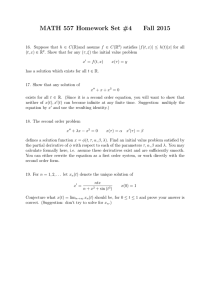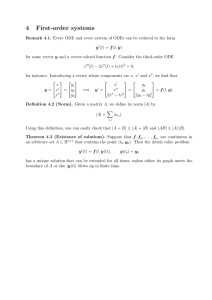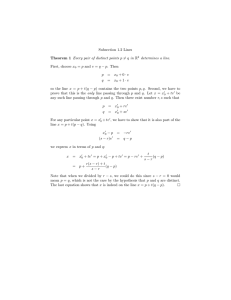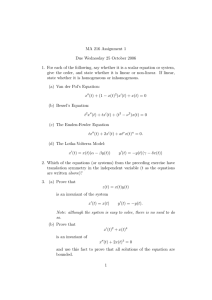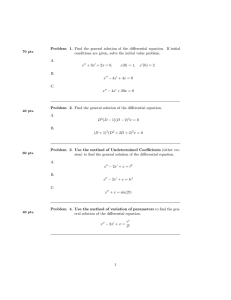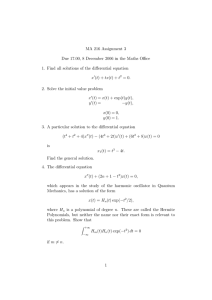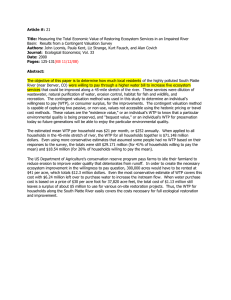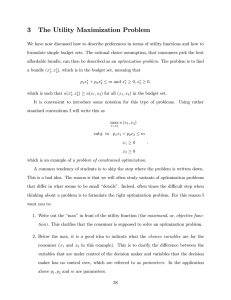Seminar 5 Problem 2
advertisement
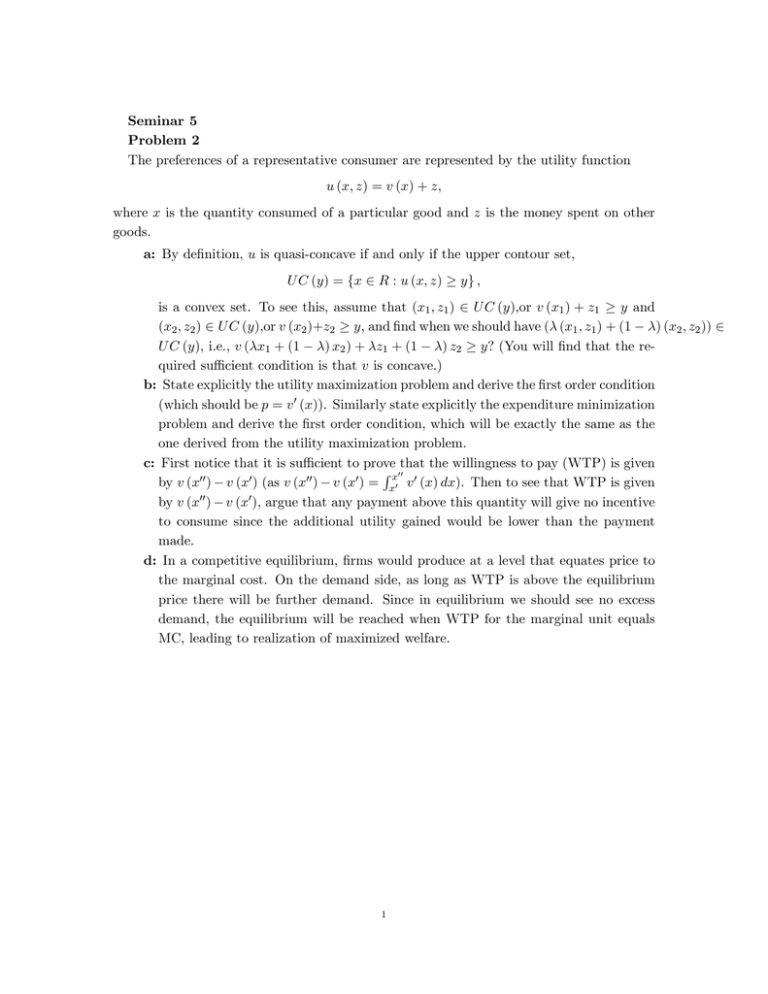
Seminar 5 Problem 2 The preferences of a representative consumer are represented by the utility function u (x; z) = v (x) + z, where x is the quantity consumed of a particular good and z is the money spent on other goods. a: By de…nition, u is quasi-concave if and only if the upper contour set, U C (y) = fx 2 R : u (x; z) yg , is a convex set. To see this, assume that (x1 ; z1 ) 2 U C (y),or v (x1 ) + z1 y and (x2 ; z2 ) 2 U C (y),or v (x2 )+z2 y, and …nd when we should have ( (x1 ; z1 ) + (1 ) (x2 ; z2 )) 2 U C (y), i.e., v ( x1 + (1 ) x2 ) + z1 + (1 ) z2 y? (You will …nd that the required su¢ cient condition is that v is concave.) b: State explicitly the utility maximization problem and derive the …rst order condition (which should be p = v 0 (x)). Similarly state explicitly the expenditure minimization problem and derive the …rst order condition, which will be exactly the same as the one derived from the utility maximization problem. c: First notice that it is su¢ cient to prove that the willingness to pay (WTP) is given R x00 by v (x00 ) v (x0 ) (as v (x00 ) v (x0 ) = x0 v 0 (x) dx). Then to see that WTP is given by v (x00 ) v (x0 ), argue that any payment above this quantity will give no incentive to consume since the additional utility gained would be lower than the payment made. d: In a competitive equilibrium, …rms would produce at a level that equates price to the marginal cost. On the demand side, as long as WTP is above the equilibrium price there will be further demand. Since in equilibrium we should see no excess demand, the equilibrium will be reached when WTP for the marginal unit equals MC, leading to realization of maximized welfare. 1
